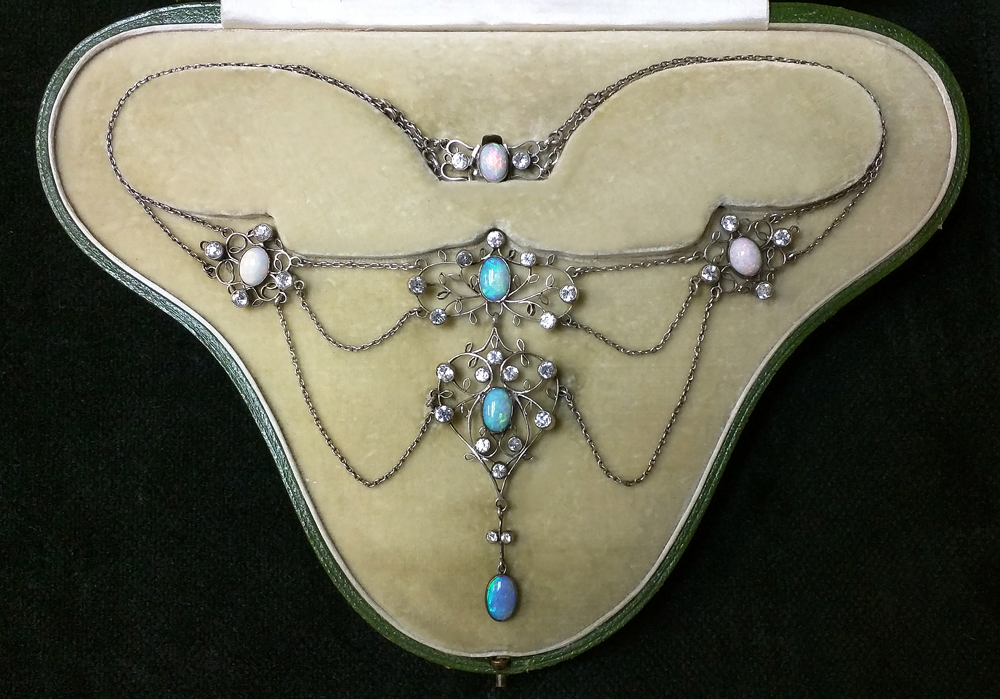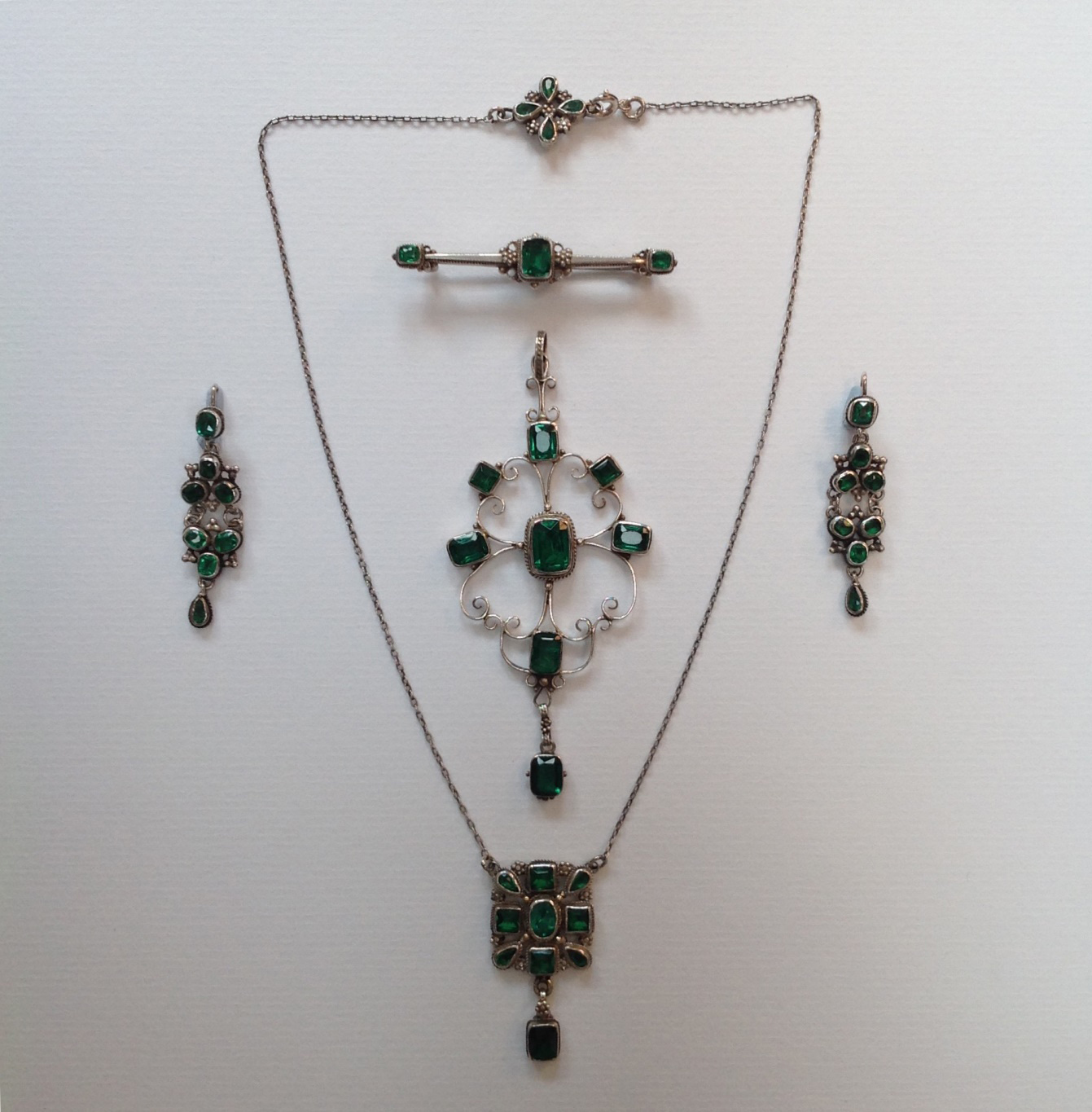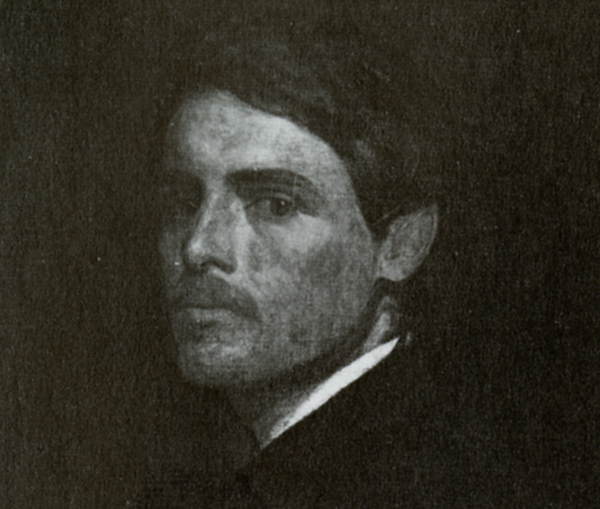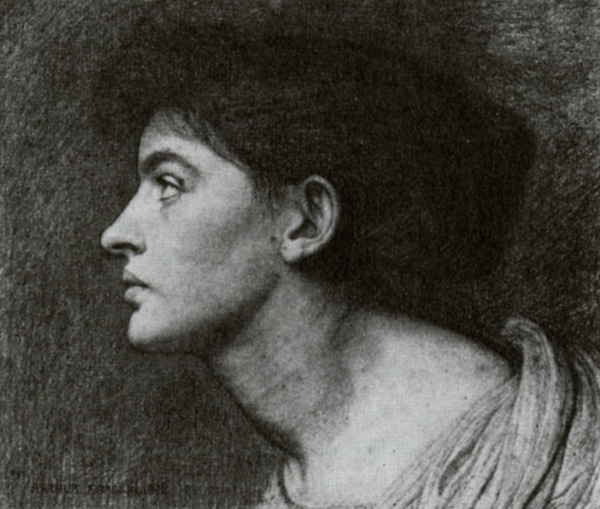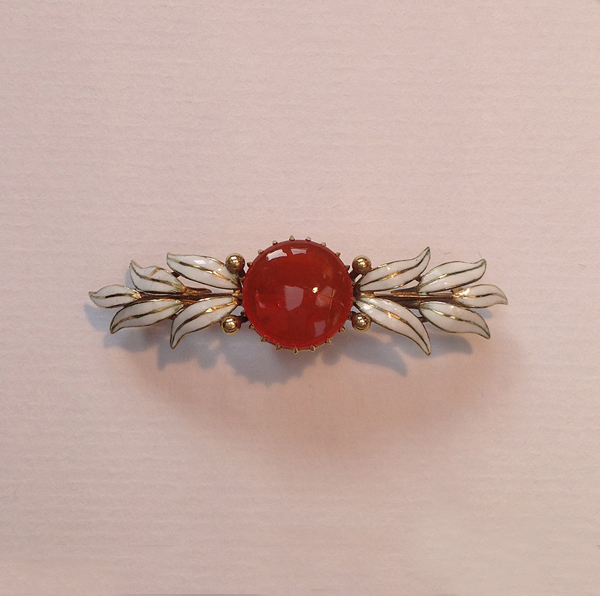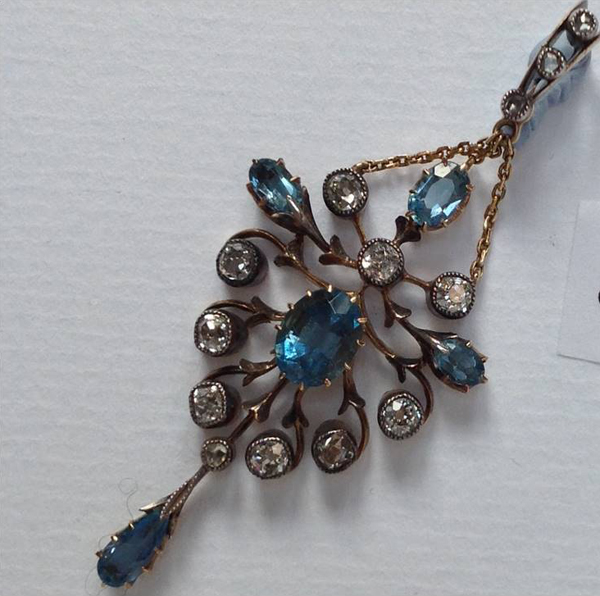Newsletter
The Two Red Roses Foundation has recently acquired six outstanding examples of important British Arts & Crafts Jewelry. Each image below is clickable for a better view!
Four of the jewels (including a rare suite) were designed and crafted by one of the most prolific husband and wife teams working at the turn of the century, Arthur and Georgina (Georgie) Gaskin. Today they are recognized as the premier artisan in the early 20th Arts and Crafts style and their jewelry is highly sought after.
The silver, opal and crystal necklace above is an excellent example of their best work with chain festoons reminiscent of Renaissance jewels, a style that was an influence on Arts & Crafts designers. This may in part have come from the designer/socialist William Morris, who was a friend of the Gaskin family and who loved to look back at this period as did the Pre-Raphaelite painters. The heart-shaped pendant is a motif often found in objects within William Morris’ circle of friends who were artists.
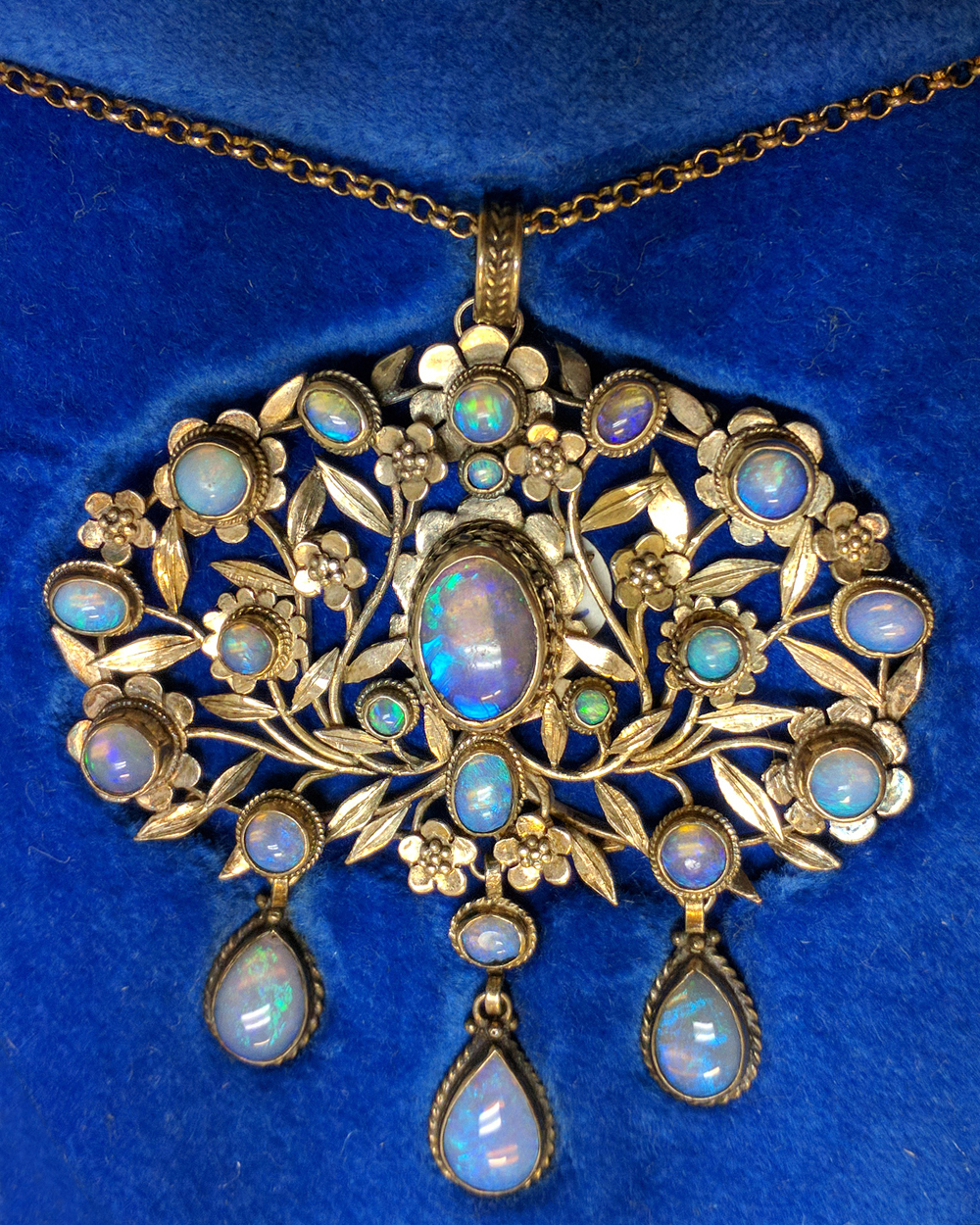
The Bird of Paradise brooch shows the Gaskins penchant for using collet set stones and their very recognizable leaf design which appears in most of their work. This pendant with upright central opal set in a case decorated at the back, surrounded by seventeen small cased blue opals. Three tear-shaped, cased opal drops with rope-moulded cases. Wire structure covered with silver leaves and florets. Reeded link to chain which terminates with a bar and loop catch. Oval wirework pendant with upright central opal set in a case decorated at the back, surrounded by seventeen small cased blue opals. Three tear-shaped, cased opal drops with rope-moulded cases. Wire structure covered with silver leaves and florets. Reeded link to chain which terminates with a bar and loop catch.
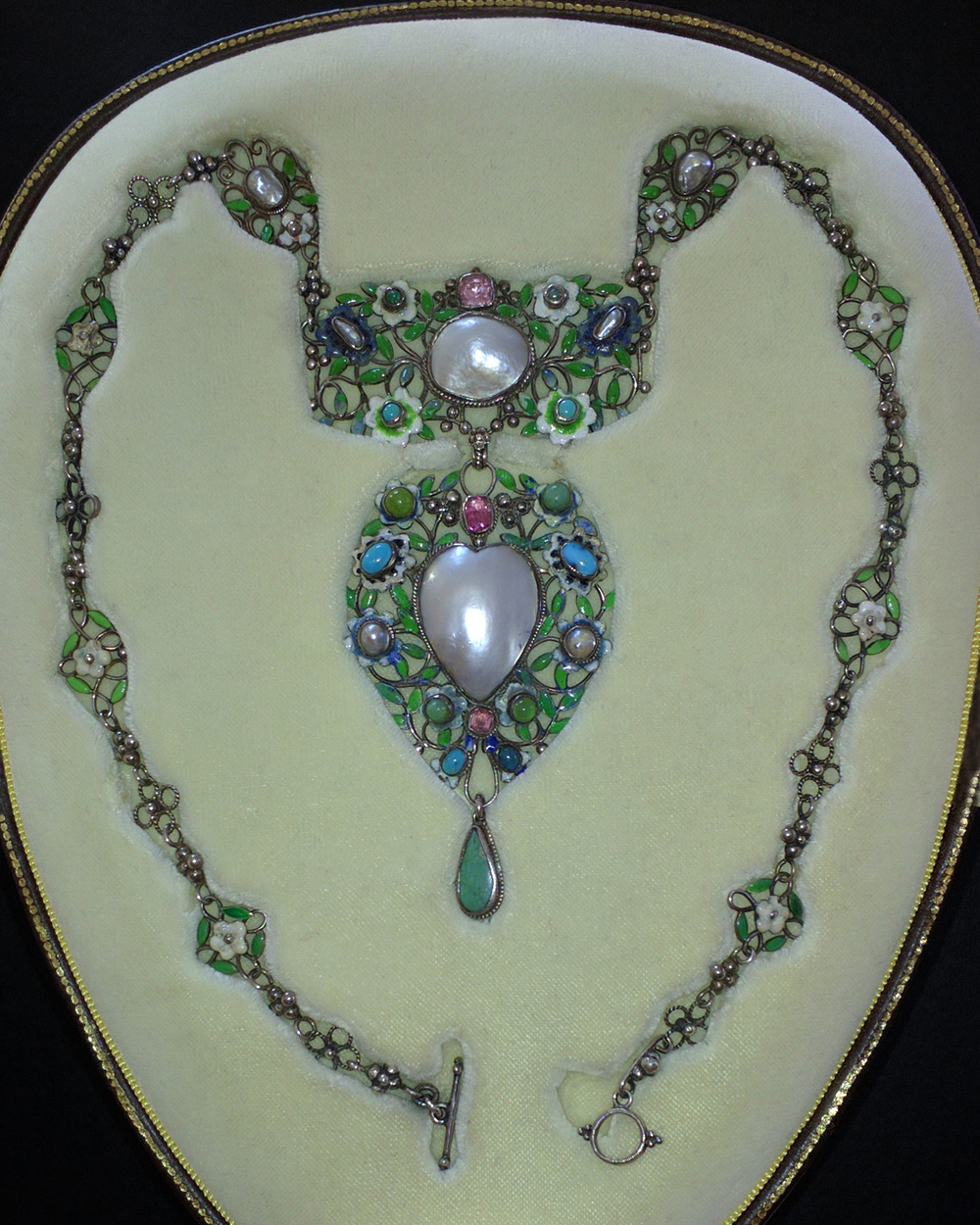
Nicolette - overall length approximately 17 inches. Silver, enamel, blister pearl, mother of pearl, turquoises, chrysoprase, pink and green tourmalines. The Victoria & Albert Drawing Book (E676-1969) shows a necklace inscribed 'Nicolette'. It has the same coloring as this pendant, and shows the same construction of the wires and the positions of the emeralds, pearls, and turquoise.
Set with green paste stones, the suite of jewelry is rare to find as a complete set. Many of the Gaskins’ jewels were commissioned by their coterie of clients. In particular the Cadbury family was known to have requested pieces, some made by setting sea glass or "pebbles" they collected as stones. They are even known to have executed a personal jewel for Queen Alexandra. Georgie continued to make jewelry for a time after Arthur’s death, but these pieces are rare.
Arthur Joseph Gaskin (16 March 1862 – 4 June 1928) was an English illustrator, painter, teacher and designer of jewellery and enamelwork. In 1883 Gaskin entered the Birmingham School of Art, being appointed to the teaching staff two years later. It was here that he met Georgie Gaskin in 1888, one of his students, whom he married in 1894. Gaskin and his wife Georgie Gaskin were members of the Birmingham Group of Artist-Craftsmen, which sought to apply the principles of the Arts and Crafts movement across the decorative arts.
The Gaskins started producing jewelry from 1899 under the name "Mr. & Mrs. Arthur Gaskin", and in 1903 Arthur was appointed headmaster of the Vittoria Street School for Jewelers and Silversmiths, where he was to remain until 1924, when the couple retired to Chipping Campden in Gloucestershire.
A number of Gaskin jewels can be identified by drawings in their sketch and ledger book which is in the collection of the Victoria & Albert Museum. Each piece of jewelry is given a name, has a rendering in color, and an indication for where each stone will be placed, as well an estimate of what the cost will be to produce the piece.
The other two pieces of jewelry were made by Mrs. Phillip Newman (Charlotte), widely acclaimed as the first woman jeweler to run a studio under her own name. She commenced her career at the South Kensington School in the early or mid-1860s. She originally apprenticed to the well-known jeweler revivalist jeweler John Brogden (beginning as his pupil). She had exhibited with Brogden in Paris in 1867 and in 1878 when he was awarded the Legion d'Honneur, she obtained the unique distinction of been given a medaille d'honneur as a collaborator. A first for a woman!
When Brogden died she continued to work under her own name. She opened her own shop using many of his assistants where she combined her own technical ability and flair with the skills of some of Brogden’s former workmen. The resulting jewels, which were mostly executed on commission, are very individual in character. No two are the same.
Mrs. Newman specialized in jewelry of the "archaeological" or neo-Renaissance, working in gold and enamel. Many of her pieces are in museum collections today including the Museum of Fine Arts, Boston and the Newark Museum. A quote from Charlotte Newman, who attended the International Congress of Women 1899 follows:
"The making of jewels is a decided test of the artistic power of nations, for it means getting a very large amount of beauty in a very small space. It means making something exceedingly pleasant to look upon, and quite suitable to the wearer and the time and occasion when it is worn; something that shall be the bijou, the point of interest of the garment it is put on, something that shall appear indispensable to perfect the effect, and not merely to show that the wearer possesses it."
The beauty, allure, and craftsmanship of jewelry produced in the early twentieth century are at once evident in these outstanding British examples. These elegantly designed jewelry pieces will join other equally stunning works found in the Two Red Roses Foundation’s collection of jewelry and metalwork produced by important American artists like Elizabeth Copeland, Kalo, and Gertrude Twichell. There are also early and rare copper pieces that embody the Viennese Secessionist style with its classic and skillful inclusion of silver inlays and squares by noted Roycroft craftsmen such as Dard Hunter and Walter Jennings. These and other exceptional works of art will be available for all to see when the Museum of the American Arts and Crafts Museum opens in 2018.
These beautiful objects of art have been chronicled in the TRRF’s richly worded and colorfully illustrated book Arts and Crafts Metalwork From The Collection Of The Two Red Roses Foundation written by Dr. Martin Eidelberg and Jonathan Clancy.
Contributions by Elyse Zorn Karlin, 2017
